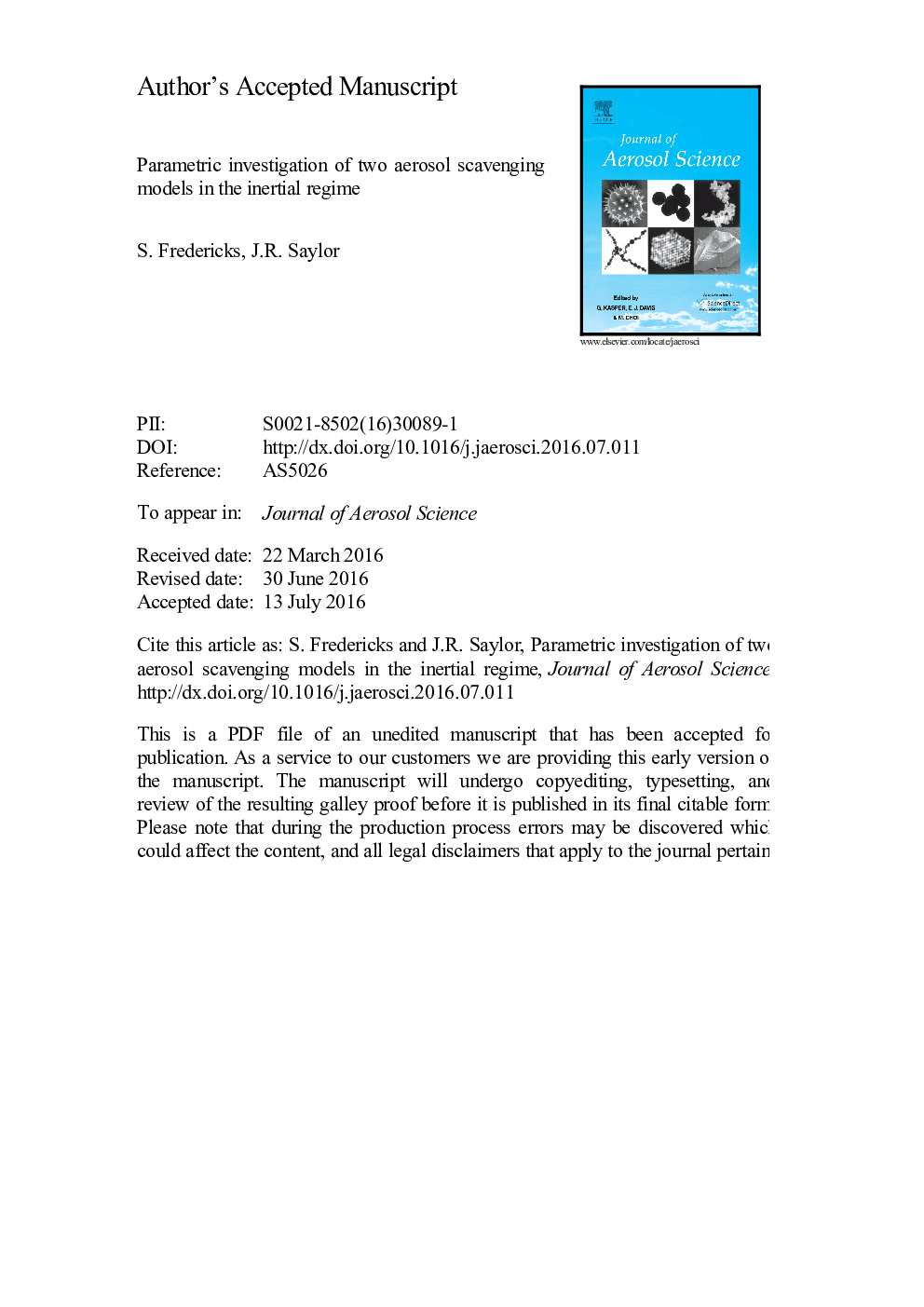| Article ID | Journal | Published Year | Pages | File Type |
|---|---|---|---|---|
| 6344310 | Journal of Aerosol Science | 2016 | 23 Pages |
Abstract
Models of drop scavenging of aerosols via inertial impaction proposed by Slinn and by Calvert are compared with published experimental measurements to determine which model is a better predictor of the data. Additionally, a parametric study was performed on the residual of the model predictions from the measurements to identify dimensionless groups not included in these models, which might increase model performance. The study found that the Calvert model predicts scavenging in the inertial regime with less error than the Slinn model. The study also found that two dimensionless groups, the relative Stokes number, Stkr, and the drop Reynolds number, ReD, are both well correlated with the residual of these models. They are included in modified versions of both of these models to provide better performance. That these two dimensionless groups improve model performance suggests that an inertial mechanism and an advective mechanism not accounted for in the existing models play some role in aerosol scavenging in the inertial regime.
Related Topics
Physical Sciences and Engineering
Earth and Planetary Sciences
Atmospheric Science
Authors
S. Fredericks, J.R. Saylor,
